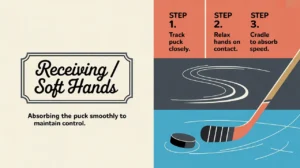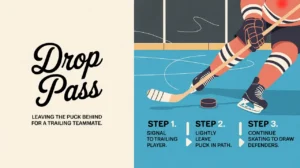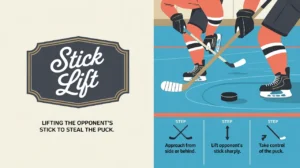Jim’s Intro to Screens & Traffic Management
Hi folks, Jim here, the only commentator who once got stuck behind three players in front of the net and called the goal before I even saw the puck.
What is screens and traffic management?
Screens and traffic management refer to a goalie’s ability to track the puck and maintain position when opponents (and sometimes teammates) crowd the shooting lanes. It’s one of the toughest parts of goaltending because vision is limited and quick reactions are essential.
How does it work?
Managing screens and traffic relies on positioning, awareness, and technique:
- Early Sightlines: Get set before the shot to lock onto the puck’s path.
- Head Tracking: Move your head side to side to look around players, not over them.
- Active Positioning: Adjust depth to improve sightlines without overcommitting.
- Seal the Ice: Stay compact to cover the lower net while tracking high shots through traffic.
- Communication: Work with defensemen to clear bodies or tie up sticks.
- Post Play: Use posts and crease markings as anchors to stay oriented when vision is obstructed.
How do you make good decisions with it?
- Pick a Side: Decide early which side of the screen gives you the clearest lane.
- Read the Traffic: Identify potential deflectors and adjust stance accordingly.
- Avoid Guessing: Stay patient and react when the puck appears, rather than committing blindly.
- Trust Your Positioning: If you can’t see, stay centered and square to the puck’s last known location.
- Work with Defense: Communication reduces chaos in front.
How do you master it?
Mastering screens and traffic management takes focused tracking drills, situational reps, and chemistry with defenders. Goalies practice reading through layered screens and adjusting their stance and depth while staying calm under pressure.
What does it look like when done right?
A goalie handling traffic well looks calm in a storm. They track pucks cleanly through bodies, control rebounds, and maintain their crease even as players jostle around them.
Commentator’s Corner
Jim’s Take
Good traffic management is like threading a needle during rush hour. You can’t see everything, but somehow, you get it done without panic.
Parent Tip
Encourage goalies to work on head tracking and communication. Clearing screens is a team effort, not a solo job.
Player Tip
Goalies, stay patient and square. Defense, help your goalie by tying up sticks and moving bodies, not blocking their view.
A Final Thought
Screens and traffic separate good goalies from great ones. Master them, and you’ll stay composed in chaos, make saves through heavy traffic, and give your team a backbone when games tighten up.









